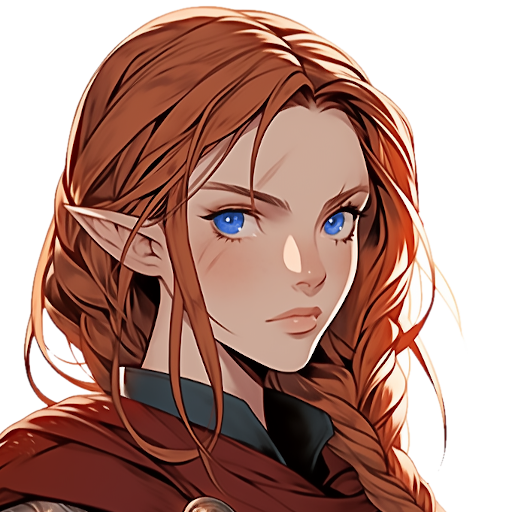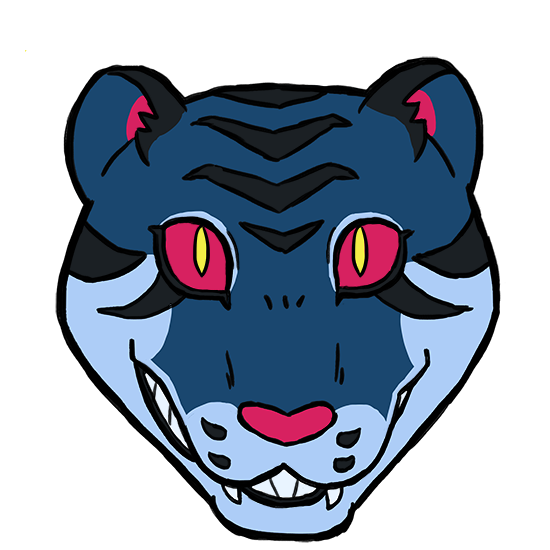Knidari - Nameless Horrors
As the chaotic Aetheric energies spiraled throughout creation, it was said that Silnos, our Great Creator, judged every single Silver One individually. Those without sin, those that still gave glory to God, were rewarded and turned into the Argentari, the Elves, the only ones truly unpunished.
Those that were with sin were punished according to their crimes, and as the crimes became more severe, the punishment became more severe as well, and this is how we have such a variety of human-like beings to this day, whether it is the Orcs, Centaurs, Goblins, Ogres, or the Lamia.
For the most heinous of the Silver Ones, the ones with the least humanity and the greatest sin, Silnos judged the harshest of all. Their once beautiful human forms were stripped away, replaced with a new form that was as far from humanity as one could possibly think. Their forms became alien and monstrous.
They could not go in the water, Silnos would not give them that freedom. They also could never again bask in sunlight, for that was too kind for creatures such as these. They would be forced to forever live in the deep, dark places of the world, where the air is foul and stagnant.
The only thing Silnos did not change was the creature's eyes. They remained human eyes, able to see as a human sees. Their eyes were made to be unable to blink and unable to dry out, so they would be forced to forever look at their altered forms, so they would be reminded of how ugly they were and still are, and so they would never again incur the wrath of God.
- Fall of Silver, Chapter 31:24-28
Nameless Horrors
While scientifically known as the Knidari, they are much more commonly known as the Nameless Horrors so as to never give them any legitimacy. These creatures form a colony and they defy logical explanation, resembling several different varieties of sea creatures much more than they ever will humans. They are often covered in several different tentacles, each with a specific purpose. Individuals are often raised to perform a specific task for the colony and grow adaptations depending on what their task is.
The smallest Knidari are milimeters across, and clump together to form a red bloody moss that covers the floors and walls of the colony's cave, marking the extent of their territory. The largest are several meters across, and physically can match an adult human in strength. While the creatures have some level of intelligence, especially the Hivemind or the Alpha of the colony, none of the creatures are capable of casting any magic on their own. They must instead take control of a living person in order to do it, which is one of the most terrifying things that can happen to a person on Vreathe, as the are slowly poisoned to death in the grasp of an alien creature.
Scientific Name: H. Sapien Knidaria
Length: <1 cm - 1 m
Weight: <1g - 20 kg
Lifespan: Potentially Infinite
Age of Maturity: 5,000 years
Average Colony size: 100,000
Total Population: Potentially Billions
Length: <1 cm - 1 m
Weight: <1g - 20 kg
Lifespan: Potentially Infinite
Age of Maturity: 5,000 years
Average Colony size: 100,000
Total Population: Potentially Billions
Habitat and Range
Knidari are only able to live in the many caverns below the surface of Vreathe, where it is cool and dark. They prefer humid environments and shallow pools of water, but it must be freshwater, as saltwater burns them. The aetheric corruption of Dragon Lords can kill them quickly. They burn in natural sunlight and even bright fires can cause their delicate skin to singe.
This means that naturally they are found deep under most of Cassel's mountain ranges and in more remote areas. Whenever a colony of Knidari is found and verified, soldiers or mercenaries are often sent in to destroy it immediately. Because of this, maps that show the range of these creatures are actually just showing locations where they were previous found, extended to encompass an entire mountainous area as a precaution.
Knidari are also found inside of numerous ancient ruins all over Vreathe, especially in cooler areas of the world, and definitely if the ruins have any underground expanse to them. This isn't just the case for Silver Age ruins, but even recent Iron Age structures less than a thousand years old might have them lurking inside. As scholars and treasure hunters like delving into all of these ruins looking for ancient technology and valuable secrets, they always hire mercenaries to escort them. The chances are good they'll accidentally stumble into a colony of Nameless Horrors at some point.
Types of Knidari
Broadly speaking, there are three types of specialized Knidari: Drones, Sentries, and Support Types. Drones are able to move around on their own, and are responsible for scouting areas outside the colony grounds as well as searching for food. Sentries are sessile and keep a lookout for any intruders. They will alert the colony when one is spotted and will also defend themselves with various weapons. Support Types perform functions that support the colony, like digesting food into usable nutrients or becoming a nursery for unspecialized young.
Drones
When 'standing up' on its support tentacles, a drone can reach around a meter tall. These creatures appear like jellyfish and have a large number of different tentacles, the most of any type of Knidari. They are able to move at similar speeds as a person running. The Disk or Bell that holds all their tentacles has 12 eyes lining the edge.
As the only type of Knidari that can move around, it is their job to gather food. They stalk in the shadows and can spend days stalking their prey before they sting it to paralyze it and drag it back to the colony. Their preferred source of food are humans and elves, as their still beautiful forms annoy the Knidari greatly. There is also a chance that one may be suitable to be taken over, which will turn the Drone into a Hivemind, allowing it to move on and start its own colony somewhere else.
Sentries
Sentries are unable to move, so are placed on the floors and walls by a Drone. They are tiny when they are this size, no more than a few milimeters across and forming a sheet of what is known as Red Moss. They slowly grow over several decades until they reach their full size of roughly half a meter across. Most sentries retain the same base form of a small ciricular disk that has several dozen tentacles growing out of it. They also have one or more specialized tentacles that perform a very specific function.
Glomenes
All Sentries have some level of bioluminescence and are visible with normal vision inside a deep dark cave. Sometimes, they need just a little more light. Glomenes accomplish this with two long stalks that give off a cool Cyan light that is visible for quite some distance.
They also possess a set of thin sticky tentacles that contain a large surface area. This acts as an olfactory sensor, allowing the creature to pick up the scent of intruders that attempt to sneak or use invisibility.
Irimenes
Sentries normally have one or two eyes, located somewhere on the disk under all their tentacles. Irimenes have extra eyes that grow on the end of long stalks. These eyes are every bit as human as their other eyes with similar vision capabilities. The stalks themselves have numerous small orbs that can detect light.
With up to a dozen extra eyes, Irimenes are able to easily see in all directions and will spot an intruder no matter their size, speed, or ability to hide in the shadows. Since they are unable to blink, these eyes are always seeing, and always looking around for anything that might seem off in the colony.
It should be noted that most Nameless Horrors have blue eyes, though there doesn't really seem to a reason behind this. Knidari have also been observed with brown, green, red, and yellow eyes.
Blademene
These sentries have several long coiled tentacles that can extend quite far from itself. At the end of these spiked tentacles are extra long spikes that can stab and slash into soft objects with ease. Nearly all Knidari tentacles can sting and inject a numbing venom in some way, but specialized Blademene tentacles inject highly acidic venom that almost immediately causes necrosis, quickly rotting away the skin in a localized area. This will destroy the food source. Blademenes are only signaled to attack when an intruder is much too strong to be defeated with other methods.
Urchins
Instead of growing tentacles from a flattened disk, Urchins instead form a more rounded skeleton. From this, a number of sharp spikes grow. These spikes can be individually moved around, and if given the signal can be launched with enough force to easily pierce skin.
Urchins can also be given the signal to launch all of their spikes at once, though with slightly less force. When dozens of them do this all at once and thousands of tiny spikes are flying across a room, the amount of damage a person would take is devastating.
The spikes have microscopic serrated edges making it very painful to take out, and they are also rather brittle when the incorrect forced are applied to them. The spikes can break off in the skin, which would then require surgery to remove. Thankfully there is no venon in these spikes, but if a very large number of them get in the skin, it will be impossible to move around without the spikes cutting further and causing great pain.
Support
Gestemene
These creatures have a similar base structure as sentries, but instead of specialized tentacles, they have a very large transparent sac growing out of them. This sac is filled with acidic liquid that slowly digests food over several months. Everything organic is digestible except for bone. Nutrients are distributed throughout the colony through pathways in the red moss.
Nurseries
Appearing very similar to a Gestemene are the Nurseries. They have large transparent sacs filled with a red liquid, containing many thousands of small polyps less than a milimeter across. These are the infant versions of Knidari. Nutrients and an optimal environment are created so the polyps can grow over an extended period of time. It takes over fifty years for a polyp to form a disk and grow tentacles, turning into red moss.
Red Moss
Covering nearly every area of a cave are tiny versions of the sentries. They have a similar number of tentacles as the larger versions, but are not specialized yet. They have two jobs. Their first job is to connect together and send neural signals to all the other individuals in a colony, allowing every individual to reach when something is detected. Their second job is to distribute nutrients around the colony.
These creatures are also incredibly sticky and the Drones place them in areas that are sometimes far outside of the Colony's territory. Travelers will often unknowingly get these creatures stuck to their foot or clothing and accidentally transport them to other locations. After finding a dark place to grow, Red Moss can divide itself to create more individuals and start a new colony. They suck nutrients out of whatever they can until a Gestemene can be grown. It will take many decades before the colony is a threat to civilization, but without a Hivemind to lead them, they might never reach that level.
Skeletal Structure
"If the eyes aren't enough to convince someone that these things used to be human long ago, then look at their skeleton. It literally takes on the shape of a deformed human skull. The Urchins have the most pronounced looking skulls, but all of them have one, even the tiny red mosses have a tiny disk that has eye sockets and a jaw! The drones have what appears like six skulls fused together, which is just unsettling if you think about it too hard..."
"If you really think you need to be alarmed about this and you might feel sorry for them... don't be! These creatures had their chance and they blew it! Silnos judged them to be unfit for humanity, so much that he almost cured them of their humanity entirely."
"If you really think you need to be alarmed about this and you might feel sorry for them... don't be! These creatures had their chance and they blew it! Silnos judged them to be unfit for humanity, so much that he almost cured them of their humanity entirely."
- Renelle Vernador

















So freaky! And yet so much nuanced xenobiology! A superb article as always Chrispy_0. One of my favourites of the year so far!
Summer Camp 2024 Greatest Hits | Spooktober 2024 Hub
Thanks for reading and leaving these kind words! Glad you enjoyed it!